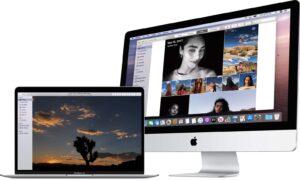What Can Malware do With Your Mac

Is it time for Apple users to take steps and protect their computers from malware using security software? The good news is that Macs are mostly unaffected by large virus attacks but malware threat continues to grow.
“Malware” is the general term for viruses, spyware, worms, and other digital junk which Windows PC users are defending themselves against on a daily basis. Broadly speaking, it’s a software you didn’t intend to be run on your computer.
Malware is not a real virus, it doesn’t spread or exploit system flaws. As with human diseases, symptoms of malware may or may not be visible. Some of the most common malware manifestations are:
- You see excessive ads, especially on websites that don’t normally show banners (such as Wikipedia)
- You see pop-up banners with ads or fake system alerts
- You are often redirected to websites with obscure content
- Random links appear in your documents
- Your Mac suddenly slows down, and the battery is overheated
Malware can steal your personal information, make your computer a part of spam distribution network, attack websites in sync with other hijacked computers, or just simply steal your computer resources while distributing itself to others. Worst types of malicious software will record keystrokes stealing your passwords and other data.
How do you get malware on your computer? It can arrive secretly when you visit a website designed to exploit browser security flaws or bugs. These programs can be inadvertently installed as a part of a bundle along a more innocent app. Sometimes more dangerous types of viruses arrive as email attachments or a link in a phishing email.
Thanks to Mac OS X design, there has not been any kind of major outbreak which has hurt Mac users, and for many, this is the sole reason to stick to their Macs. The target market for Mac viruses is 20 times smaller than that for Windows viruses, and to code a virus for Mac the hacker would have to buy the Apple computer since you cannot download Mac OS and install in on a cheaper device.
But that doesn’t mean that Mac users can afford to be ignorant about computer security. It only takes time when a small piece of code brings a real pain and damages your computer. Users of Parallels Desktop or VMWare Fusion to run PC software on their Macs are especially vulnerable because their Macs turn into actual PCs. Even Mac files in shared folders are vulnerable if you access your Mac while running the PC. Your virtual machine should be protected with antivirus software.
While this is true that Mac users are safe without the dedicated anti-malware software installed, there are certain rules that they have to follow to make sure their machines are safe and malware-free:
- Regularly clean your caches and Downloads folder.
- Make sure your computer runs the latest version of macOS complete with all security updates.
- Do not download the app that has not been digitally signed. When possible always do the custom installation to make sure you are not downloading any malicious add-ons.
- Whenever possible install apps only from AppStore and not from third-party websites, no matter how important or well-designed they are.
You can learn more about removing malware from Mac on this resource.
A word of caution goes to the people out there who have had their Apple computers infected with the malware. It’s best to avoid purchasing many anti-malware options provided by internet security vendors. Many of these “antiviruses” are not able to fully detect viruses and Trojans. Most of the options provided on top of search result pages prey on people’s fears and sell software which does not work at all in providing security features but instead acts as a malware.
While it’s true that Apple users will never have experience the scale and variety of malware problems that Windows users have had, it’s unlikely that Mac users will be able to live without anti-malware software solutions indefinitely.






